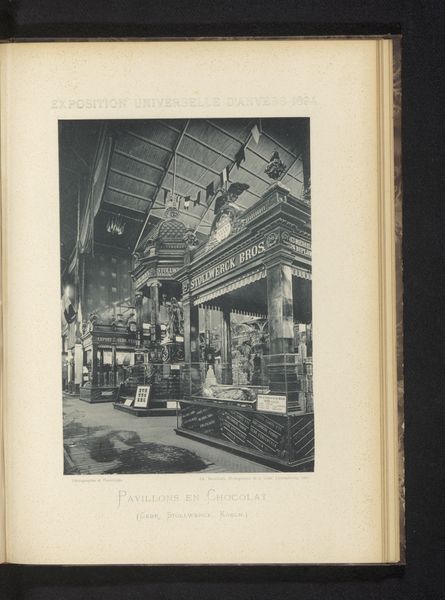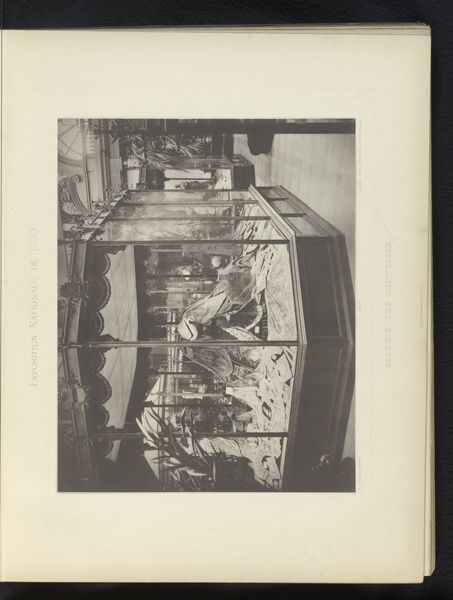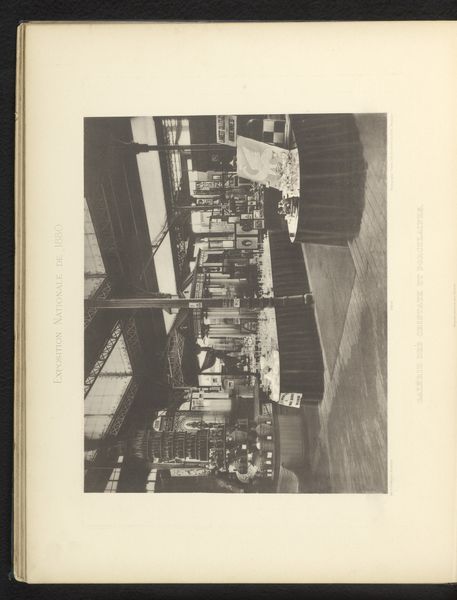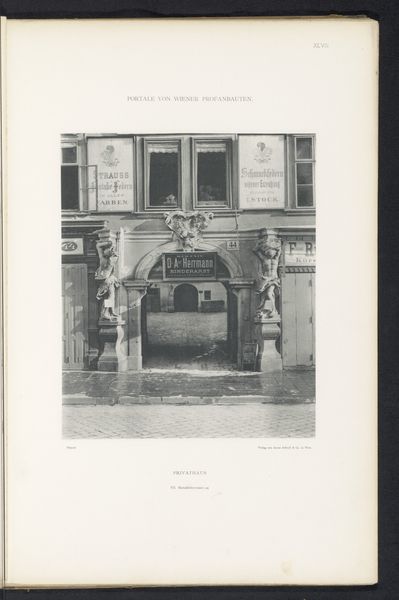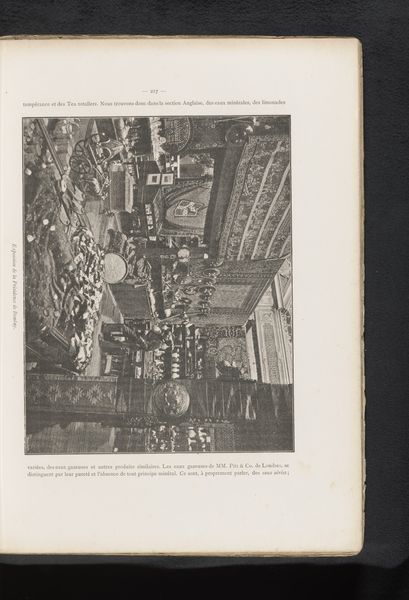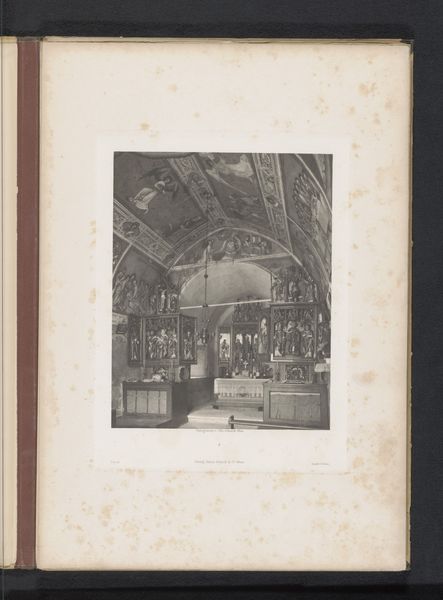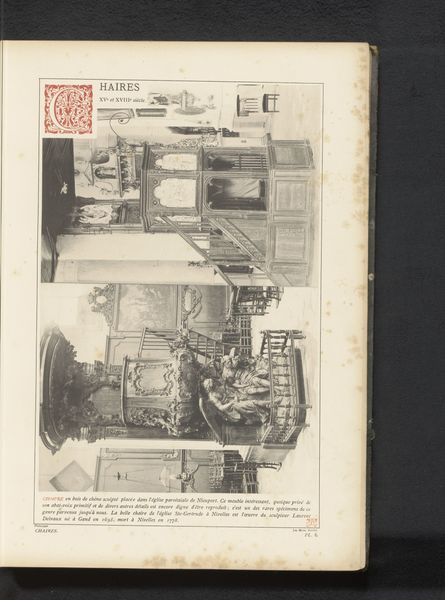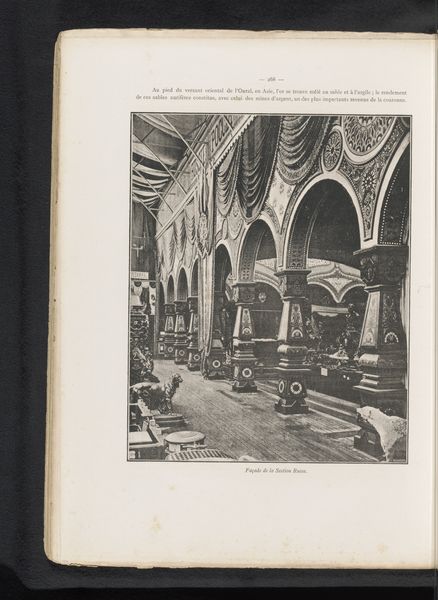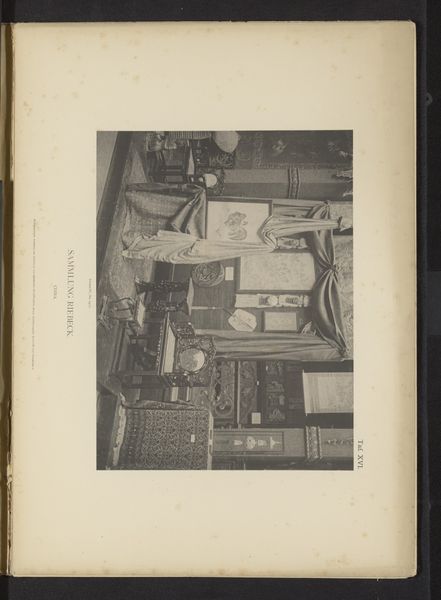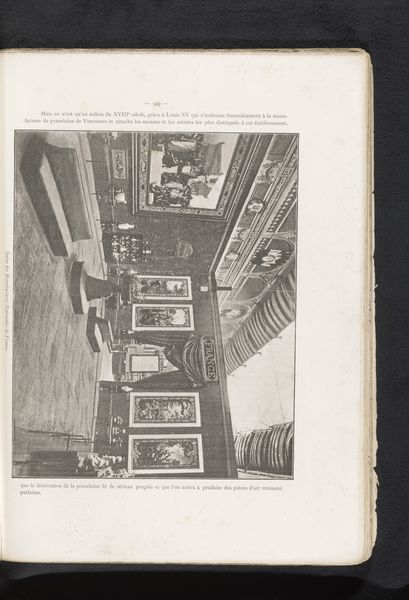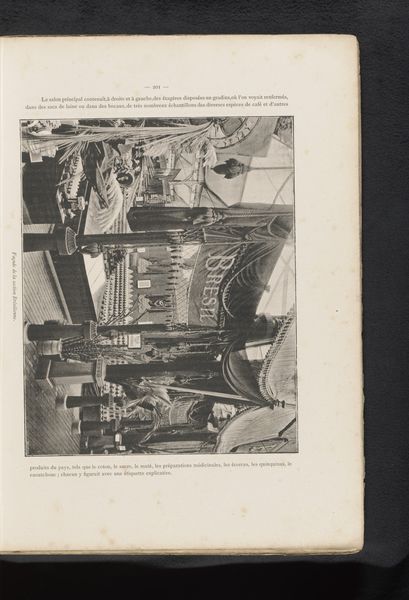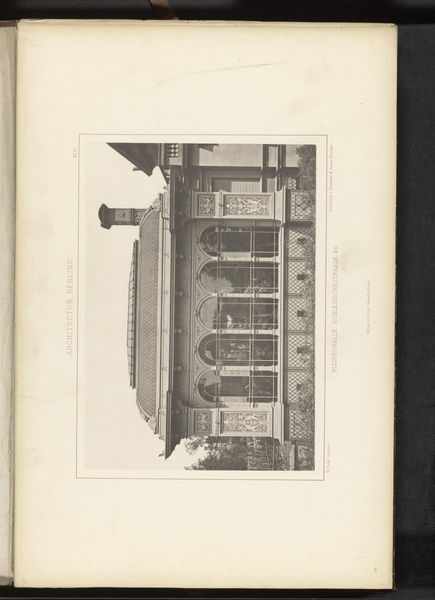
Gezicht op het Oostenrijks-Hongaarse deel van de Wereldtentoonstelling van 1885 in Antwerpen before 1885
0:00
0:00
print, engraving, architecture
# print
#
cityscape
#
engraving
#
architecture
Dimensions: height 276 mm, width 220 mm
Copyright: Rijks Museum: Open Domain
Curator: Before us, we have an engraving titled "Gezicht op het Oostenrijks-Hongaarse deel van de Wereldtentoonstelling van 1885 in Antwerpen," offering us a glimpse into the architectural grandeur of the time. Editor: My first impression is of a stage set, meticulously crafted, almost theatrical. The play of light and shadow creates such an interesting texture in this piece. Curator: Indeed, and I find it fascinating how these World's Fairs acted as colossal stages themselves, reflecting a nation’s self-image. The architecture is, in this instance, laden with Hapsburg symbolism, an attempt to project power and prosperity. We see it explicitly in the flags. Editor: Absolutely. I notice the consistent use of vertical lines, primarily through the pillars and draped elements, creates a sense of controlled height, and draws the eye upward. Curator: That’s a key observation. Consider how this echoes a traditional power structure, visually reinforcing hierarchy. It is intriguing, too, how the engraver blends Western Realism with the emerging Japonisme, hinting at cultural exchange. Editor: I hadn't thought of that, but you're right. There is a subtle flatness and deliberate use of negative space that pulls in influences outside Europe. Do you feel the use of engraving contributes to how seriously the view takes the built structure in this image? Curator: I think the act of engraving—requiring careful, precise mark-making— lends an undeniable aura of permanence and legitimacy to the scene. Also consider the architecture itself which combines features we may see as familiar now as well as some other symbolic figures we might not have familiarity with, adding layers of contextual understanding to the visual field. Editor: It becomes almost like an official record, set in stone, literally. So much more than just capturing an aesthetic. Curator: Precisely. This view then, invites us to ponder the aspirations and anxieties reflected in this temporary construction, and how such constructed spaces create cultural meaning. Editor: For me, the artwork serves as a strong lesson about how something presented as celebratory can still tell us about the structures it exists within.
Comments
No comments
Be the first to comment and join the conversation on the ultimate creative platform.
